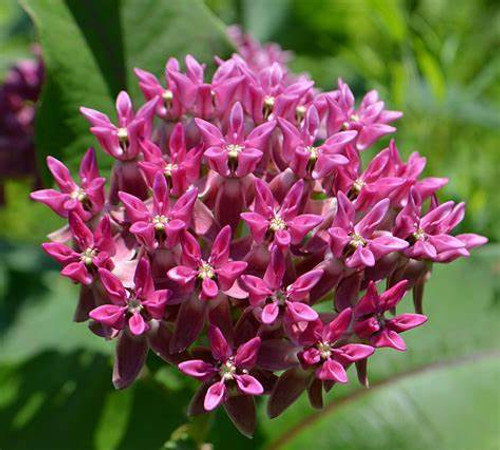Butterfly Milkweed - Asclepias tuberosa
The butterfly milkweed, Asclepias tuberosa, is a vibrant and beneficial perennial plant native to North America. It is a member of the milkweed family (Asclepiadaceae) and is commonly referred to as butterfly weed due to its ability to attract and support various pollinators, especially butterflies.
It grows well in USDS zones 3-11.
Characteristics of the Butterfly milkweed.
- Appearance: Butterfly milkweed is recognized for its striking appearance, featuring clusters of bright orange to reddish-orange flowers that bloom from late spring to early fall. The flowers form dense, rounded umbels atop sturdy stems, creating a visually appealing and colorful display.
- Foliage: The plant has lance-shaped leaves alternately arranged along the stem, giving it an attractive, bushy appearance.
- Height: Butterfly milkweed is a relatively compact plant typically growing to 1 to 2 feet.
Habitat and Growing Conditions:
- Geographical Range: Butterfly milkweed is native to many areas, from the eastern United States to the Midwest and southward to Texas and Florida.
- Soil Type: It thrives in well-drained soils, including sandy or rocky soils, but is adaptable to various soil types.
- Sunlight: Butterfly weed prefers full sunlight and is often found in open fields, prairies, meadows, and roadsides.
Attracting Pollinators is a specialty of the Butterfly Milkweed plant.
Butterfly milkweed is crucial in supporting pollinators, especially butterflies and bees. Here's how it attracts them:
- Nectar-rich Flowers: The vibrant flowers produce copious amounts of nectar, attracting butterflies, bees, and other pollinators seeking nourishment.
- Color and Scent: The bright orange color of the flowers is particularly appealing to butterflies, and the plant's subtle fragrance further entices them.
- Mimicry: The flowers of butterfly milkweed mimic the appearance of other nectar-rich flowers, acting as a visual cue for butterflies drawn to these familiar shapes.
Conservation and Ecological Importance:
- Monarch Butterfly Habitat: Butterfly milkweed is a critical host plant for monarch butterflies. Monarch larvae feed exclusively on milkweed, making it an essential plant for the survival of this iconic butterfly species.
- Wildlife Support: Besides monarchs, the plant attracts a variety of pollinators, supporting a diverse ecosystem of bees, butterflies, and other beneficial insects.
Gardeners and conservationists often include butterfly milkweed in their landscapes not only for its visual appeal but also for its ecological significance in supporting pollinators and contributing to the overall biodiversity of the garden.






